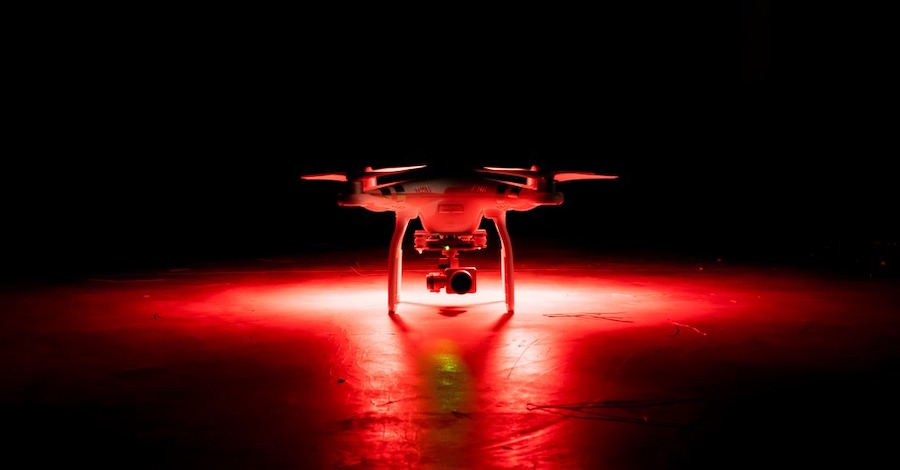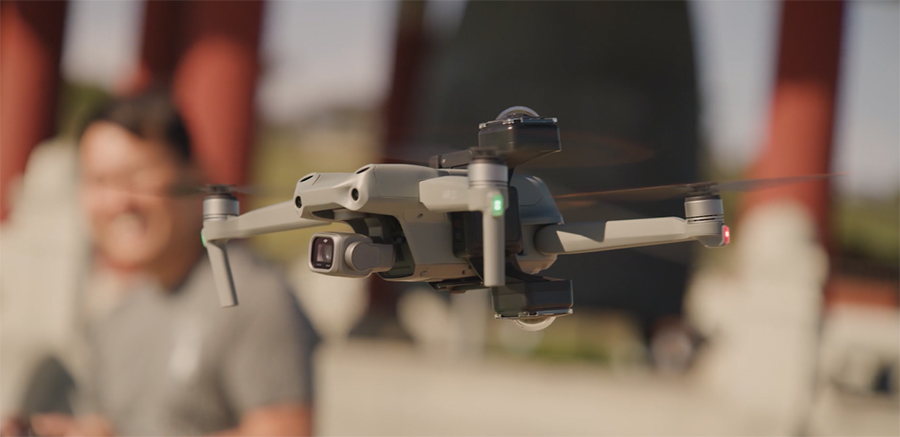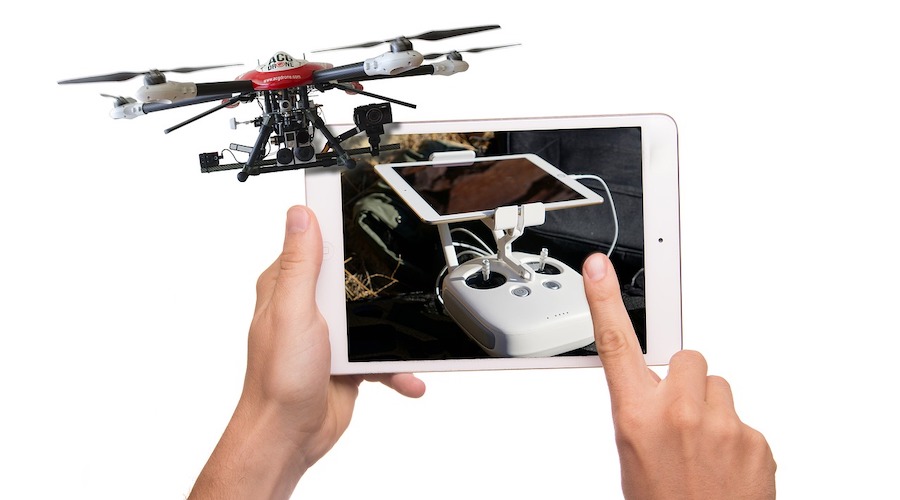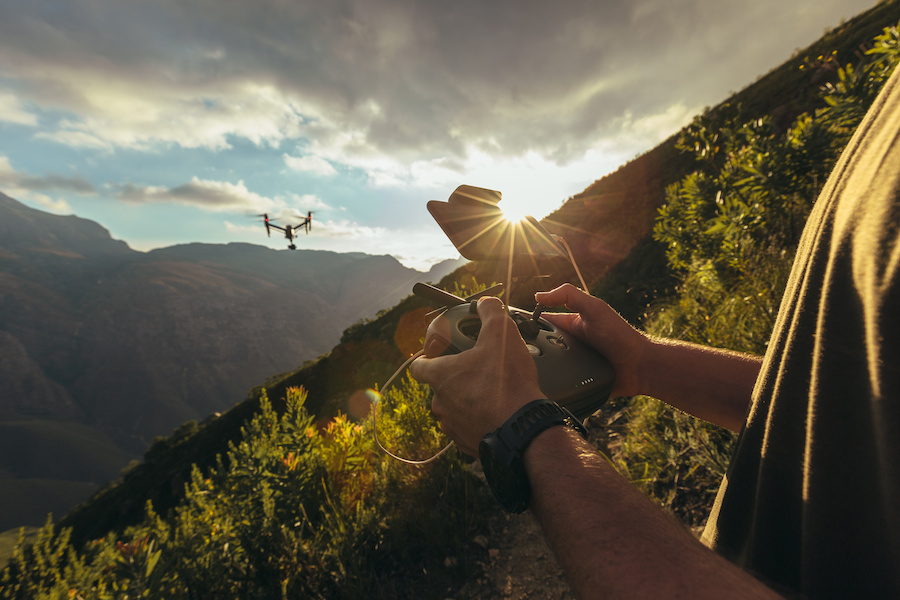-
What is a Part 107 night waiver?
-
The basic parts of a night waiver application
- Operation Title
- Responsible Party
- Remote Pilot
- Description of Proposed Operation
- Description of Operational Risks and Mitigation
-
What risks and mitigating measures should you include in the application?
- How to maintain visual line-of-sight during darkness
- How the remote pilot will see and avoid possible obstacles and other aircraft
- How the remote pilot will continuously monitor the drone’s location, altitude, and attitude
- How the remote pilot and the crew can avoid the effects of night illusions
- How the drone will remain visible up to a maximum of 3 statute miles
-
Other factors to consider
- Training
- Site preparation
- Pre-flight planning
- Communication between crew members
-
What are the chances of my waiver request getting approved?
-
Final thoughts
The 14 CFR Part 107 rules act as the legal framework for commercial drone flight, outlining when and where professional drone pilots can operate in the interest of safety. However, the FAA recognizes that such restrictions may prove counter-productive to the aim of promoting the commercial use of drones.
For this reason, the FAA has included a provision that allows Part-107 licensed drone pilots to request for waivers to a limited selection of restrictions. One such provision is for drone flight at night-time. How does this waiver work and how can you secure it?
What is a Part 107 night waiver?
When it comes to flying at night, the relevant rule is 107.29, which states that commercial drone operations can only be conducted during daytime or during twilight, defined as the 30-minute period before sunrise or after sunset, given that the drone has the appropriate anti-collision lighting.
Many drone pilots have expressed their opposition to this rule, mostly because of the huge number of commercial opportunities that could be lost. Some events and weddings happen at night, and some inspection and survey jobs simply cannot be finished within the window of daylight.
In anticipation of such needs, the FAA allowed Part 107-licensed drone pilots to request for waivers for drone flight at night. This is among similar provisions for other restrictions, such as being able to fly drones over crowds or beyond visual line-of-sight.
A night waiver is granted upon request by an individual or entity, and only upon the discretion of the FAA. Even when this waiver is granted, it will be subject to several conditions as determined by the FAA, including specific training and documentation requirements. The same can be said for any type of Part 107 waiver.
The basic parts of a night waiver application
Let’s start with the basics. To start applying for a Part 107 night waiver, simply head over to the FAA DroneZone website and go to the waiver application section. At the onset, you’ll need to specify that you’re applying for a waiver for 107.29 and provide a few basic details, as follows:
Operation Title
This will serve as the title of your application. Try and summarize what your operations will be in a single statement. Make it descriptive, yet concise.
Responsible Party
The Responsible Party will act as the point person for the application and will handle all further correspondence with the FAA. If the commercial drone operations will be done for a company, the company CEO or representative is usually listed as the Responsible Party.
Remote Pilot
The Remote Pilot will be the person directly controlling the drone. This person will need to have a current Part 107 remote pilot certificate. The details of the pilot’s certificate will have to be indicated under the application.
In the next section, you will need to provide the details of your proposed operations, the hazards you are anticipating, and the mitigating measures you aim to implement. The key here is to be as detailed as possible to let the FAA know that you know what you are talking about. A healthy amount of foresight will also be necessary. We’ll go over the basics of what each section entails before we talk about tips for you to improve your chances of getting an approved waiver request.
Description of Proposed Operation
In this section, you will need to provide all the necessary details concerning your operations, including when and where you will fly your drone, what type of drone you will be flying, and the remote pilot who will be operating the drone.
The best way to describe where you will conduct the operations is to provide a map of the area with an illustrated boundary, as well as the latitude and longitude of the vertices of the boundary. You will also need to specify the maximum altitude needed for your proposed operations. It would be best to do your homework and identify any nearby controlled airspace, if any.
As for the drone, you’ll need to provide its make and model, maximum flight time, weight, payload capacity, maximum range, and maximum speed. It would also help to mention any special capabilities, such as obstacle detection systems or anti-collision lighting.
Lastly, you’ll need to provide details on the remote pilot. Start with their personal details, Part 107 certificate number, years of experience, past waivers granted, and any relevant training courses completed.
Description of Operational Risks and Mitigation
This section is a bit less straightforward, as what is included here can vary from one waiver type to another and may even be unique to the situation. In this section, the FAA requires that you indicate all the risks you are anticipating for the proposed drone flight operations. This section is often the longest part of the waive request because of all the possible content that can be written.
A brief write-up won’t be enough to cover what should be written in this section, so we’ll tackle everything separately.
What risks and mitigating measures should you include in the application?
The good news is that you don’t have to be completely blind to what the FAA expects to be written in the section for risks and mitigating measures. The FAA has released a list of guide questions that pertain to the risks that will have to be addressed in the waiver request. Let’s go over these possible risks one by one.
How to maintain visual line-of-sight during darkness
In most cases, the stock anti-collision lights that come with drones are not visible enough for satisfactory use in darkness. This means that you will have to install third-party lights on your drone.
There are two types of light that you will need: one set for high-visibility positioning, and another for anti-collision. Positioning can be done using the same system that other aircraft use, which is a red light on the left and a green light on the right. Anti-collision lights should have an ultra-bright LED light, ideally with a strobe effect.
The waiver should also indicate a limited distance that the drone will maintain from the remote pilot so that visual line-of-sight is never broken. A range of 300 to 500 feet can be indicated, although this number may change based on weather conditions or the presence of large obstacles in the area.
Precautions have to be made in the event of lighting failure. Aside from having to halt the operations completely, a designated landing point must be identified that is free from any obstacles. The reason is that locating the drone may be next to impossible in the darkness, making it difficult to make the return flight without crashing into something. The designated landing point must be accessible using a clear flight path.
It would also be prudent to have a visual observer with the remote pilot. Both of them are to maintain visual line-of-sight with the drone. Should any of them lose visual contact, the operations will be halted until visual contact can be established again.
How the remote pilot will see and avoid possible obstacles and other aircraft
While you may be able to install lights on your drone, some obstacles in your flight area may end up shrouded in darkness. Not knowing where these obstacles are will very likely cause you to crash into them. How can you avoid such a hazard?
The answer lies in preparation. It’s necessary to conduct a pre-survey of your proposed area during daytime, taking note of the location and size of the obstacles. You can even do a few practice flights to identify clear flight paths. You can also take this opportunity to identify good landing spots. Make sure to indicate all this information in your waiver request. All members of the crew must be familiar with the presence and size of the obstacles in the area.
Measures can also be taken during the conduct of the operations to allow the vision of the crew to adjust to low light conditions. This can include dimming of all screens or the wearing of dark sunglasses several minutes before the drone operation starts.
Should the remote pilot or any visual observer detect the encroachment of a manned aircraft in the operations area, the drone should give way immediately. This can be done by reducing the altitude immediately. If the aircraft persists in the area, the drone can be guided to any of the designated landing points. The drone should remain grounded until the area is clear.
How the remote pilot will continuously monitor the drone’s location, altitude, and attitude
Determining the drone’s orientation can be challenging even when flying in daylight, but this challenge becomes even more pronounced in darkness. This is where the position lights come in. These should be arranged in the same way that they are arranged in manned aircraft – red on the left, and green on the right. This is a very useful tool in determining the attitude of the aircraft just by visual observation.
The ground station interface also plays a huge role in maintaining the orientation of the drone. The screen of the remote controller (or a connected smartphone) can be used to monitor telemetry data such as altitude, the direction of flight, the distance of the operator from the drone, and the drone’s horizontal speed. It would also be preferable to see your drone’s location super-positioned on a map of your area of operations.
How the remote pilot and the crew can avoid the effects of night illusions
Anyone conducting aircraft operations at night is vulnerable to physiological conditions that can degrade night vision. The FAA calls these “night illusions” and is a phenomenon that other airmen prepare for. It’s such an important component of aviation that it’s included in the FAA Helicopter Flying Handbook, the Airplane Flying Handbook, and the Pilots Handbook of Aeronautical Knowledge.
Since no such standards are required for Part 107-licensed drone pilots, those who wish to fly at night could benefit from additional training. This could be as simple as reading the chapters on Night Operations on any of the aforementioned reference materials. It would be best if all members of the crew, including the visual observers, undertake the same preparation.
How the drone will remain visible up to a maximum of 3 statute miles
Visibility needs to be treated differently to orientation. The FAA requires drones to maintain visibility of up to 3 statute miles when flying at night, regardless of the self-imposed limits of the waiver request. For this reason, an ultra-bright LED light with a strobe effect will be the optimal solution.
Make sure that you will be using the appropriate LED lights for the proposed operations. Strobe light specially designed for drones are rated according to how far away they will remain visible. The FAA only requires visibility of 3 statute miles, but you can get high-intensity lights rated for 10 statute miles. It’s best to play it safe in this case.
Other factors to consider
Aside from the potential risks, the waiver must also outline a specific protocol or procedure that the crew will follow. This procedure could include any or all of the following:
Training
As mentioned, all crew members will have to be trained with regards to night operations using reference materials from the FAA. Although there are no standards imposed on the crew’s proficiency, the Responsible Party may implement their own set of standards. This could be something as simple as an interview or a written exam with a required passing score.
Site preparation
In addition to surveying the area during daytime and ensuring that it does not encroach on controlled airspace, a little bit of preparation may be needed to make sure that the operations proceed smoothly.
The landing and takeoff areas must be cleared of all obstacles and illuminated for easier identification. The boundaries of the operations area should be clearly marked with lights, flags, cones, or signs to discourage the entry of bystanders. If a bystander should walk into the operations area, it is the responsibility of the remote pilot to avoid flying the drone directly above the bystander.
Pre-flight planning
As part of planning, the remote pilot must check for any NOTAMs or TFRs in the operations two or three days before the scheduled operations. If needed, the operations can be rescheduled if relevant restrictions have been put in place.
Prior to starting the operations, the remote pilot must orient all members of the crew about the objectives and other details of the proposed operations. The orientation should include the mission plan, any anticipated challenges, emergency response, and the duties of each team member.
As part of pre-flight planning, an inspection of the drone needs to be done just before the start of the operations. This involves checking for any structural damage of the drone and its parts and checking if all anti-collision and positioning lights are functioning.
Communication between crew members
Communication is key when it comes to doing drone operations with a crew. Visual observers need to be able to relay information to the remote pilot clearly and concisely.
Ideally, the visual observers and remote pilot should be proximal with each other that they can communicate using just raised voices. However, the use of two-way radios is also acceptable.
What are the chances of my waiver request getting approved?
Here’s the great news: out of the 4000 Part 107 waivers granted by the FAA since 2016, over 3800 were for night operations. Moreover, the FAA seems to have taken a more relaxed stance towards night-time operations in the last couple of years. For instance, they approved more than a hundred of these waivers within the month of March 2020.
As long as you follow our recommendations here, you should have a very good chance of having your waiver request for night-time operations approved. Just keep in mind that it may take the FAA two to three months to review your application.
Final thoughts
The restriction against drone flight at night has proven to be one of the most contentious in the Part 107 rules, prompting the FAA to review their standards. There’s light at the end of the tunnel, though. The FAA has already published a proposal to lift this particular restriction, replacing it with a requirement to focus on “night visions” as part of the Part 107 certification process.
While the proposal is being reviewed, we’ll just have to make do with the current provision for waivers.
Contents



